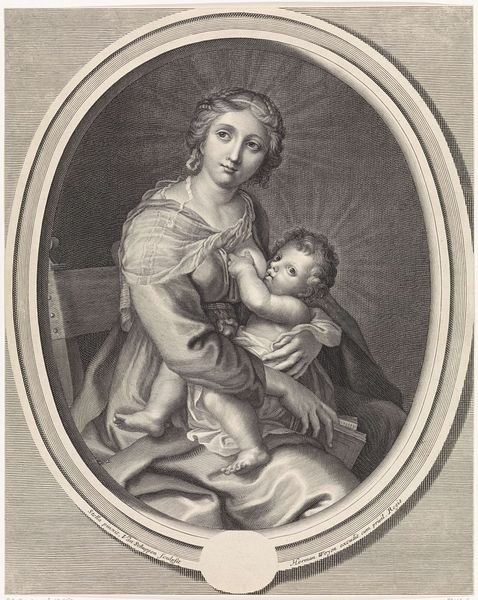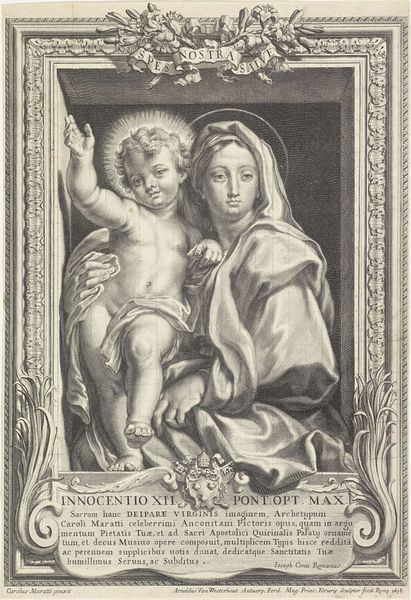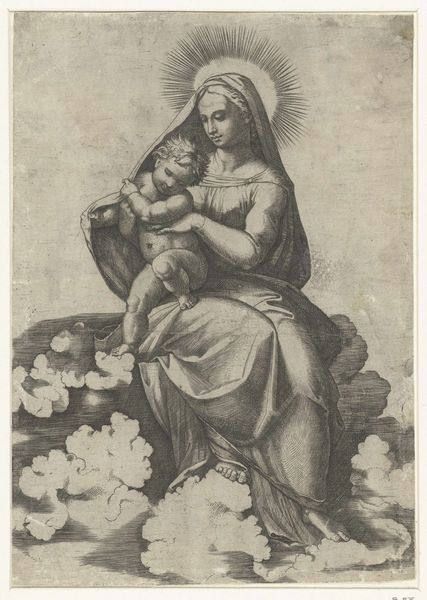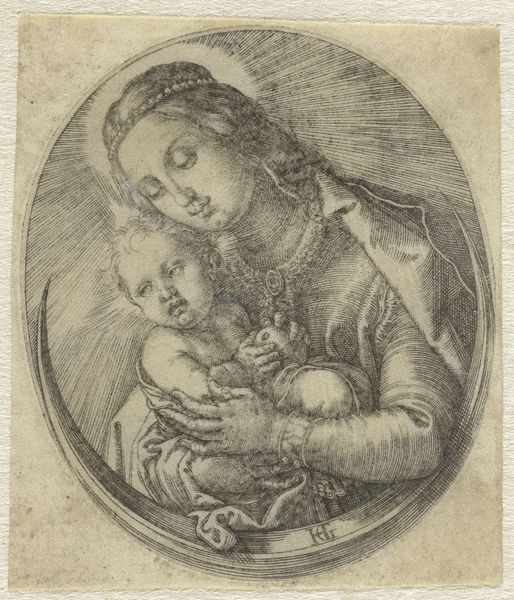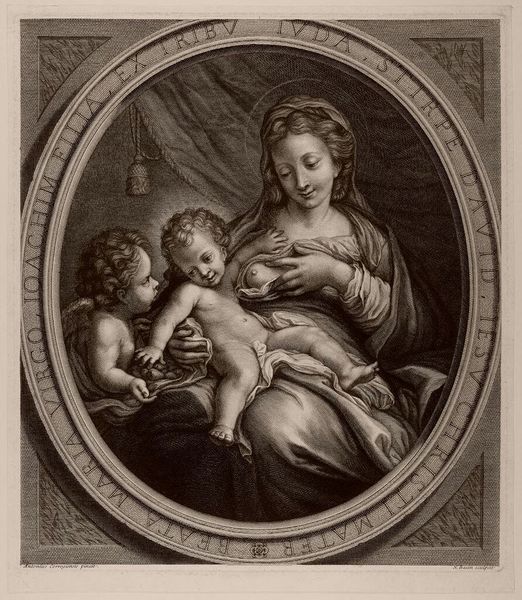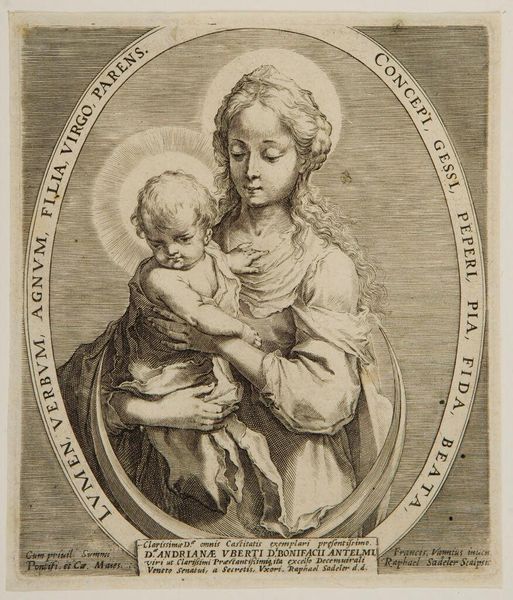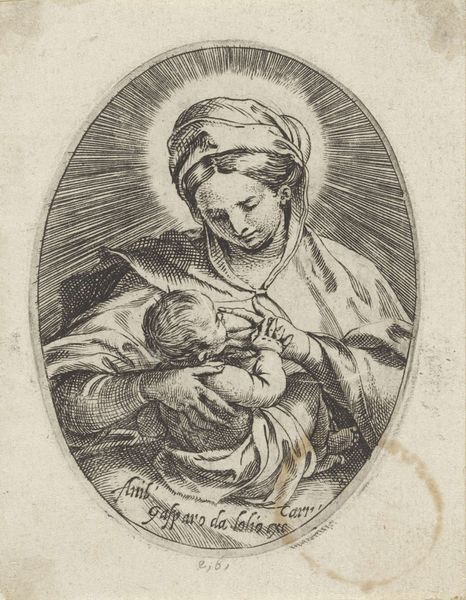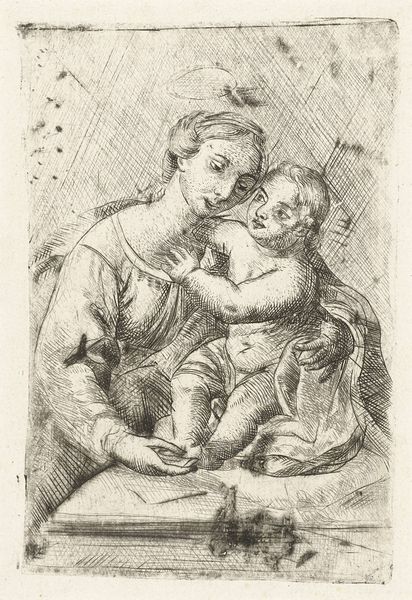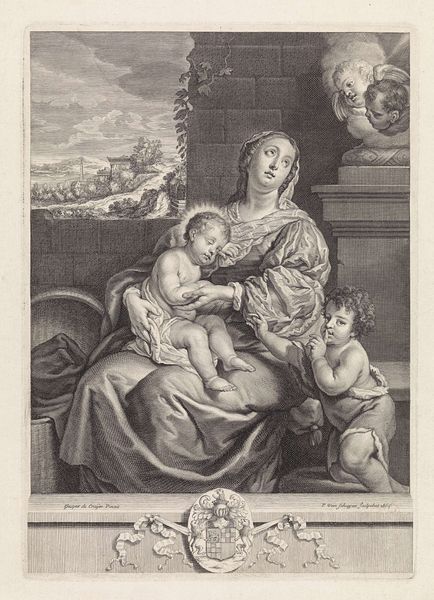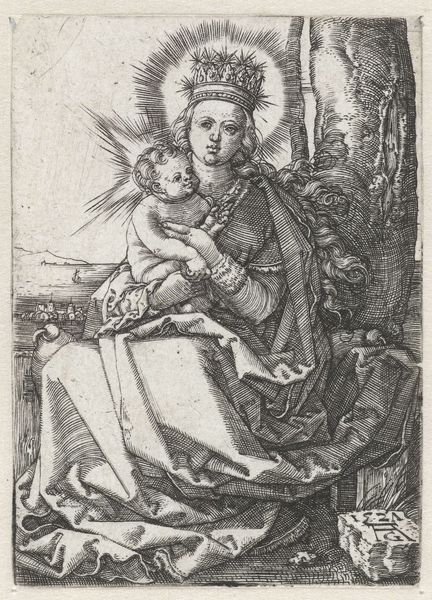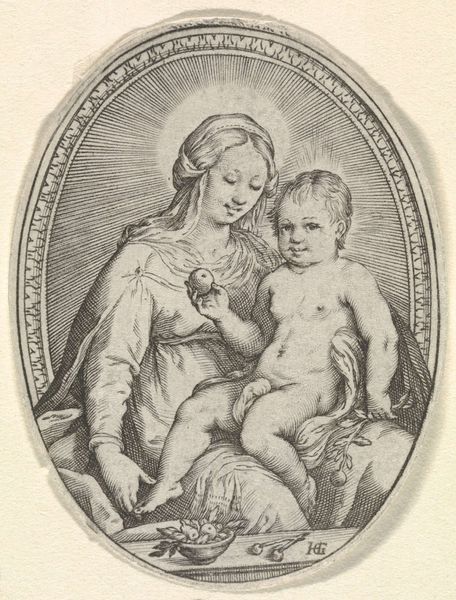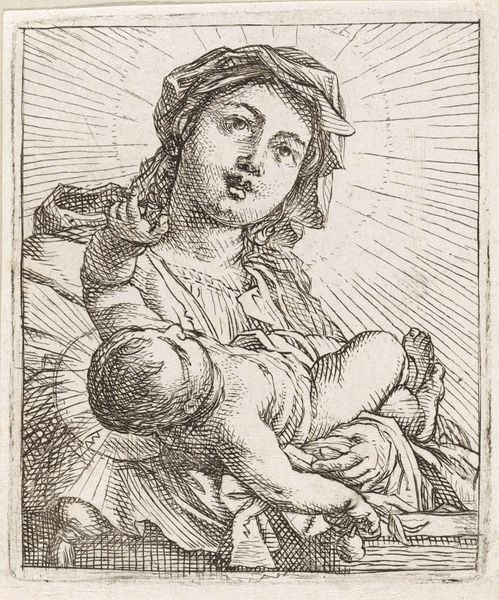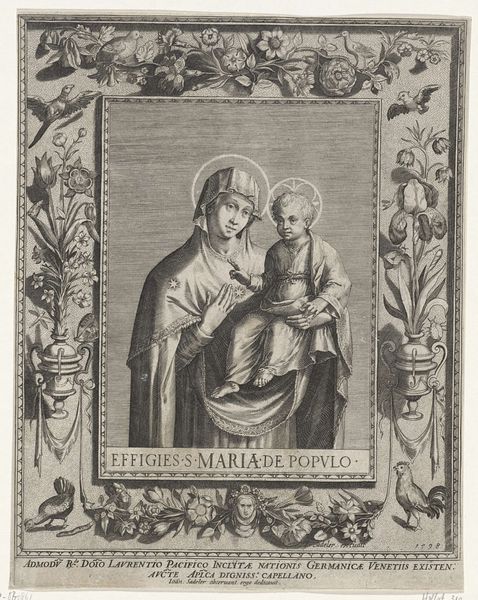
print, engraving
#
portrait
#
baroque
# print
#
old engraving style
#
figuration
#
engraving
Dimensions: height 67 mm, width 59 mm
Copyright: Rijks Museum: Open Domain
Curator: Before us is "Maria met zegenend Christuskind," or Mary with the Blessing Christ Child, an engraving dating from 1625 to 1677. It’s attributed to Wenceslaus Hollar. Editor: There’s such delicacy in those fine lines. It looks so tactile despite being an engraving, you almost expect the folds of fabric to rustle if you touch it. Curator: Hollar was renowned for his skill as a printmaker, especially his meticulous attention to detail. This piece exemplifies that. Consider the context: the Baroque period, a time of heightened religious fervor and the propagation of Christian iconography. This image circulated widely, impacting how people visualized these central figures. Editor: It’s interesting how the composition reinforces hierarchy. Mary occupies the bulk of the image; her robes creating volume in contrast to the orb held by the Christ child. What kind of paper was used in printing these images? The texture surely adds another dimension. Was this a luxury good, or something produced for mass consumption? Curator: More the latter, I suspect. Hollar produced thousands of prints; they served various purposes—from book illustrations to standalone devotional images, which made them available to a wider audience. It’s less about luxury and more about access, impacting religious expression on a societal level. Editor: That’s fascinating! So, the artistic labor of the engraver—all that meticulous work with tools and material—allowed the image and the values associated with it to circulate much more freely. Curator: Exactly. Consider, too, that prints like these reinforced social norms and power structures, depicting idealised versions of religious figures while shaping piety among the masses. Editor: Thinking about materiality, it’s all too easy to gloss over the reproductive element inherent to engraving. These kinds of images had significant economic and cultural impact that extends beyond aesthetics. Curator: Indeed. We often focus on the artistry but acknowledging its socio-political reach deepens our understanding. Editor: This image prompts us to think critically about production and how materials impact value. Curator: A reminder that a work of art can be beautiful, meaningful, and a potent vessel for cultural expression, simultaneously.
Comments
No comments
Be the first to comment and join the conversation on the ultimate creative platform.

